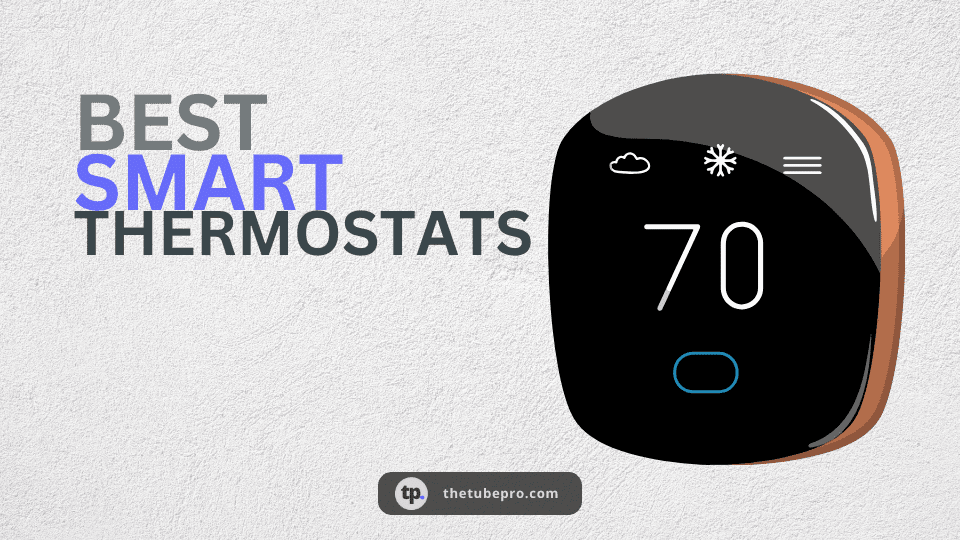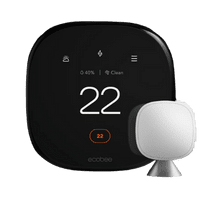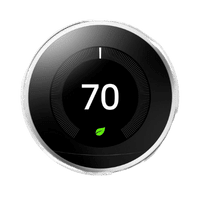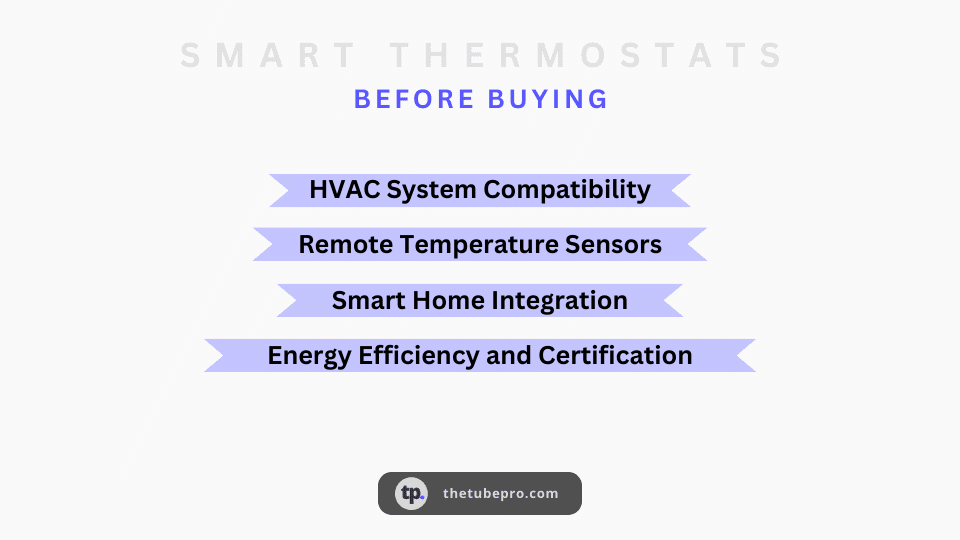Smart thermostats are revolutionizing the way we control the temperature in our homes, offering a host of features that optimize performance and save energy.

In this comprehensive guide, we’ll explore the benefits of smart thermostats, delve into their key features, and help you navigate the world of home automation with confidence.
Why Choose a Smart Thermostat?
A smart thermostat goes beyond traditional temperature control by utilizing advanced technology to learn your preferences, adapt to your schedule, and provide remote access to your heating and cooling systems. Here are some compelling reasons to consider upgrading to a smart thermostat for your home:
Energy Efficiency
Smart thermostats are designed to maximize energy savings without compromising comfort. By automatically adjusting temperature settings based on occupancy, time of day, and weather conditions, these devices optimize heating and cooling operations, resulting in significant energy savings.
Smart thermostats that earn the ENERGY STAR label have been independently certified to deliver energy savings based on actual field data.
Convenience and Comfort
Gone are the days of manually programming your thermostat or returning to an uncomfortable home after a long day. Smart thermostats learn your temperature preferences and establish a schedule that automatically adjusts to energy-saving temperatures when you’re asleep or away. With geofencing capabilities, your smart thermostat knows when you’re on the way home and adjusts the temperature to your liking, ensuring a comfortable environment whenever you walk through the door.
Remote Control
With Wi-Fi connectivity, smart thermostats offer the convenience of controlling your home’s heating and cooling systems remotely through your smartphone. Whether you’re at work, on vacation, or simply lounging on the couch, you can easily adjust the temperature, monitor energy usage, and receive alerts and notifications from your smart thermostat. This level of control gives you the power to manage your home’s climate from anywhere, anytime.
Insight and Analytics
Smart thermostats provide valuable data on equipment usage and temperature patterns in your home. By tracking and analyzing this information, you gain insights into your energy consumption and can make informed decisions to optimize efficiency.
Additionally, periodic software updates ensure that your smart thermostat is equipped with the latest algorithms and energy-saving features, allowing you to stay ahead of the curve in home climate control.
Now that we’ve explored the advantages of smart thermostats, let’s take a closer look at the key features that make these devices stand out in the world of home automation.
Key Features of Smart Thermostats

Smart thermostats offer a wide range of features that enhance convenience, control, and energy efficiency. While specific functionalities may vary between models, here are some common features you can expect from a smart thermostat:
Learning Capabilities
One of the standout features of smart thermostats is their ability to learn your temperature preferences and establish a schedule that aligns with your lifestyle. By monitoring your manual adjustments and patterns of occupancy, these devices adapt and optimize temperature settings to maximize comfort and energy savings.
Over time, your smart thermostat becomes a seamless extension of your daily routine, ensuring a consistently comfortable environment without the need for constant manual adjustments.
Geofencing
Geofencing is a game-changer when it comes to smart thermostats. By leveraging the location services on your smartphone, these devices can detect when you’re approaching or leaving your home.
This allows your smart thermostat to automatically adjust the temperature based on your proximity, ensuring that your home is at your desired comfort level when you arrive and conserving energy when you’re away. Geofencing adds an extra layer of convenience and energy efficiency to your smart home ecosystem.
Remote Access
Imagine being able to control your home’s temperature with a few taps on your smartphone, no matter where you are. With remote access capabilities, smart thermostats make this a reality. Whether you’re at work, traveling, or simply in another room, you can adjust the temperature settings, monitor energy usage, and receive notifications from your smart thermostat. This level of control puts you in the driver’s seat, allowing you to create the perfect climate in your home from anywhere.
Integration with Smart Home Platforms
Smart thermostats are designed to seamlessly integrate with popular smart home platforms, such as Amazon Alexa, Google Assistant, Apple HomeKit, and Samsung SmartThings. This compatibility allows you to consolidate control of all your smart devices into a single app and automate interactions between different devices.
For example, you can configure your smart thermostat to lower the temperature when you leave the house and lock your front door, or start warming the house when your garage door opens as you arrive home. The possibilities for creating a truly connected and convenient home are endless.
Energy Monitoring and Insights
Smart thermostats provide valuable data and insights into your home’s energy usage and temperature patterns. With the ability to track and analyze this information, you can gain a deeper understanding of your energy consumption and make informed decisions to optimize efficiency.
Some smart thermostats even offer detailed reports and recommendations for energy-saving measures, empowering you to take control of your energy usage and reduce your environmental footprint.
Compatibility with HVAC Systems
Before purchasing a smart thermostat, it’s important to ensure compatibility with your existing HVAC (heating, ventilation, and air conditioning) system. Most smart thermostat manufacturers provide compatibility checkers on their websites, allowing you to verify whether their device will work seamlessly with your HVAC setup. Additionally, some smart thermostats require a common wire (C wire) for power, while others offer alternative solutions or can be installed without a C wire. Understanding the compatibility requirements will help you choose the right smart thermostat for your home.
With an array of features and benefits, smart thermostats are transforming the way we interact with our home’s climate control systems. From energy savings to convenience and comfort, these devices offer a comprehensive solution for optimizing your home’s temperature and reducing your environmental impact.
In the next section, we’ll explore some of the top smart thermostat models available on the market today, helping you make an informed choice for your home.
Top Smart Thermostat Models
When it comes to smart thermostats, several models stand out for their performance, features, and compatibility. Here are our top picks:
1. Ecobee Smart Thermostat Premium

The Ecobee Smart Thermostat Premium is a top-tier model that outperforms other thermostats in terms of performance and features. It comes with the best remote sensor in the market, providing accurate temperature readings and optimizing heating and cooling around your home.
The Premium model also boasts an air-quality monitor, a built-in microphone and speaker, and Alexa integration for voice control. Compatible with most smart-home platforms, the Ecobee Smart Thermostat Premium offers a seamless and comprehensive smart home experience.
2. Google Nest Learning Thermostat (3rd Generation)

Google’s Nest Learning Thermostat is a popular choice known for its sleek design and advanced learning capabilities. This model learns your preferred heating and cooling settings and creates a schedule to maximize efficiency. With a larger, crisper display and wide compatibility with HVAC systems, the Google Nest Learning Thermostat offers a user-friendly interface and seamless integration with other smart devices.
Optional Nest Temperature Sensors can be added to measure temperature in rooms without a thermostat, ensuring optimal comfort throughout your home.
3. Amazon Smart Thermostat

For those on a budget, the Amazon Smart Thermostat offers a cost-effective solution without compromising on performance. While it may not have the same level of sophistication as other models, it works well and is widely compatible with HVAC systems.
With features like timed scheduling and Alexa Hunches, which learns your patterns and suggests customized settings, the Amazon Smart Thermostat provides convenience at an affordable price point. The only downside is the lack of compatibility with remote sensors, which are available with our top picks.
4. Mysa Smart Thermostat

If you have electric baseboard heaters, the Mysa Smart Thermostat is a perfect choice for adding smart controls. This model utilizes scheduling, geofencing, and a smart eco mode to save energy and reduce your carbon footprint.
With compatibility with popular smart-home platforms and a sleek design, the Mysa Smart Thermostat offers a comprehensive solution for optimizing electric baseboard heating while maintaining comfort and convenience.
Now that we’ve explored some of the top smart thermostat models, it’s important to understand key considerations before making a purchase. In the following section, we’ll delve into what you need to know before buying a smart thermostat.
What to Know Before Buying a Smart Thermostat

Before investing in a smart thermostat, it’s crucial to consider several factors to ensure compatibility and optimal performance. Here are some key considerations to keep in mind:
HVAC System Compatibility
When choosing a smart thermostat, it’s essential to verify compatibility with your HVAC system. Most manufacturers provide compatibility checkers on their websites, allowing you to input information about your system and determine whether the smart thermostat will work seamlessly. Additionally, some systems may require a common wire (C wire) for power, while others offer alternative solutions. Understanding your HVAC system’s requirements will help you select the right smart thermostat for your home.
Remote Temperature Sensors
If you have multiple rooms or areas in your home with varying temperature needs, consider a smart thermostat that supports remote temperature sensors. These sensors can be placed in different rooms to provide more accurate temperature readings and ensure optimal comfort throughout your home. By utilizing remote temperature sensors, you can create customized heating and cooling schedules based on specific areas, further enhancing energy efficiency and comfort.
Smart Home Integration
If you already have a smart home ecosystem or plan to integrate multiple smart devices in the future, it’s important to choose a smart thermostat that supports your desired platform. Whether it’s Amazon Alexa, Google Assistant, Apple HomeKit, or Samsung SmartThings, compatibility with your preferred platform will allow for seamless integration and automation between devices. This integration opens up a world of possibilities, allowing you to create personalized and interconnected smart home experiences.
Energy Efficiency and Certification
When selecting a smart thermostat, look for models that are ENERGY STAR certified. These thermostats have undergone independent certification based on actual field data, ensuring they deliver energy savings. ENERGY STAR certified smart thermostats are designed to optimize energy consumption without sacrificing comfort, making them an excellent choice for reducing your environmental impact and saving on utility bills.
Sustainability and Smart Thermostats
In addition to the energy-saving benefits of smart thermostats, these devices contribute to overall sustainability efforts. According to ENERGY STAR, if every US household installed a smart thermostat, the collective energy savings would be equivalent to 1.2 million fewer vehicles on the road.
The widespread adoption of smart thermostats can make a significant impact on reducing carbon emissions and conserving energy resources. Additionally, many energy companies offer rebates and incentives for installing smart thermostats, further encouraging their adoption and supporting sustainability initiatives.
The Future of Smart Thermostats
As technology continues to advance, smart thermostats will only become more sophisticated and capable. The competition in the market is driving innovation, with manufacturers constantly pushing the boundaries to offer new features and improve energy efficiency. Some areas to look forward to in the future of smart thermostats include:
- Enhanced machine learning capabilities for even more personalized comfort settings
- Integration with emerging smart home technologies, such as voice assistants and augmented reality
- Improved energy analytics and recommendations for further optimizing energy usage
- Expansion of compatibility with HVAC systems and smart home platforms
As the demand for smart home automation grows, expect to see an exciting evolution in smart thermostat technologies, making home climate control more intuitive, efficient, and interconnected than ever before.
Conclusion
Smart thermostats are revolutionizing home climate control, offering energy efficiency, convenience, and comfort in one sleek package. With features like learning capabilities, geofencing, remote access, and integration with smart home platforms, these devices provide a comprehensive solution for optimizing temperature settings and reducing energy consumption. Whether you choose the Ecobee Smart Thermostat Premium, Nest Learning Thermostat, Amazon Smart Thermostat, or Mysa Smart Thermostat, you’ll enjoy the benefits of enhanced control, energy savings, and a more sustainable home.
Investing in a smart thermostat is not just a step towards a more connected and efficient home, but also a conscious choice to reduce your environmental impact. By embracing this technology, you can contribute to a greener future while enjoying the comfort and convenience of a smart home ecosystem. So, why wait? Take the leap into smart thermostats and unlock a world of possibilities for your home and the planet.


